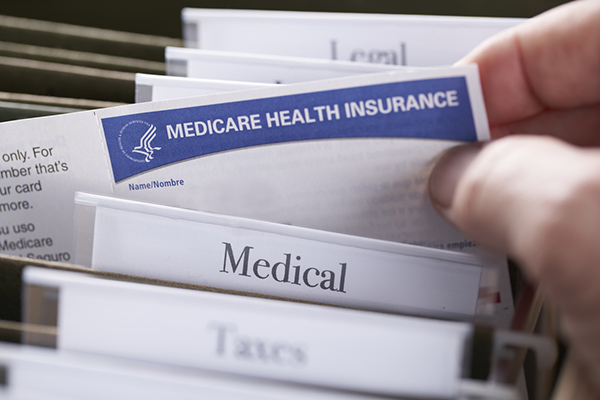The Original Medicare Plan
Medicare is a federal health insurance program for people 65 years of age or older, certain disabled people under 65 and people of any age with End-Stage Renal Disease (ESRD). The benefits for Original Medicare are administer through the Centers for Medicare and Medicaid Services (CMS).
Original Medicare is divided into several parts and it is important to understand how these parts fit together to provide coverage for you.

Medicare Part A – Hospital Insurance
Medicare Part A benefits for most people at age 65 cost $0 per month. This premium has been pre-funded by you or your spouse working and paying Medicare taxes for 10 years (40 quarters). If you don’t automatically qualify for premium-free coverage you can still apply for it, however you will have to pay a premium for the benefits.
Medicare Part A generally will cover:
Medicare Part B – Medical Insurance
Medicare Part B is your outpatient Medicare coverage. Without it, you would be uninsured for services like a doctor visit, out-patient surgery, lab work and other preventive services.
Most people will pay a monthly premium for Medicare Part B insurance. This premium is set by Social Security and it changes from year to year. Your Medicare Premiums for the current year can be found here.
Americans in higher income brackets will pay more for Medicare Part B benefits than those in a lower bracket. How much you will pay is determined by your adjusted gross income reported to the IRS from 2 years ago. This is known as Medicare’s Income-Related Monthly Adjustment Amount or IRMAA. The IRMAA can also apply to your Medicare Part D premium as well.
Medicare Part B covers 2 types of services:
Preventive Services -Visits to your healthcare provider to prevent illness or detect it at an early stage. These services could include:
- Flu shots
- Hepatitis B shots
- Pneumococcal shots
- One-time “Welcome to Medicare” preventive visit
- Yearly “Wellness” visit
Medically necessary services – Services or supplies needed to diagnose or treat your medical condition such as:
- Clinical research
- Ambulance services
- Durable Medical Equipment (DME)
- Limited outpatient prescription drugs
How much will Original Medicare cost?
Original Medicare does not cover all of your health care costs. You will have to share the cost of your services by paying premiums, deductibles and coinsurance.
Medicare Part A Premiums
Most Americans do not pay a monthly premium for Medicare Part A benefits as a result of you or your spouse paying Medicare taxes for 10 years while working. This is also know as “Premium-Free Part A.”
You will automatically get Premium-Free Part A at age 65 if:
- You are already receiving retirement benefits from Social Security or the Railroad Retirement Board.
- You’re eligible to received Social Security or Railroad benefits but have not yet filed for them.
- You or your spouse had Medicare-covered government employment.
You will get Premium-Free Part A under age 65 if:
- You have received Social Security or Railroad Retirement Board disability for 24 months.
- You have End-State Renal Disease (ESRD) and meet certain requirements.
Medicare Part A Deductible and Coinsurance
Original Medicare measures your use of inpatient hospital and skilled nursing facility services (Part A) as a benefit period. Your Part A benefit period begins the day that you enter a hospital or skilled nursing facility (SNF) and will not end until you have not received inpatient or SNF care for 60 days in a row.
What will you when you use Original Medicare Part A benefits?
Original Medicare Part A deductible and coinsurance costs can change from year to year. Click the link below to be redirected to Medicare’s website for your most current benefit costs.
Medicare Part B Premiums
Medicare Part B is not automatic for some people and they will need to sign up for Medicare Part B. For others, they may automatically be enrolled.
If you do not sign up for Original Medicare Part B when you are first eligible, you may pay a late enrollment penalty.
If you have enrolled into Medicare Part B or have been automatically enrolled you will pay a premium each month for benefits. This premium will be automatically deducted from the benefits you receive from one of the following:
If you are not collecting benefits from any of these, you will get a bill to pay your Medicare Part B premium.
Medicare Part B Deductible and Coinsurance
Medicare Part B does have an annual decubital that you must pay. After you have met this deductible, you will typically pay a 20% coinsurance of the Medicare-approved amount for services such as:
- Most doctor services
- Outpatient Therapy
- Durable Medical Equipment (DME)
Click the link below to view the most up-to-date information about your Medicare Part B deductible and coinsurance costs.

We know Medicare in Montana
Our approach is individualized and focuses on what fits your situation.
If you are nearing age 65 or have questions in regards to Original Medicare, we can help.
Contact a member of the Roger L. Daniel Insurance Medicare Team.
